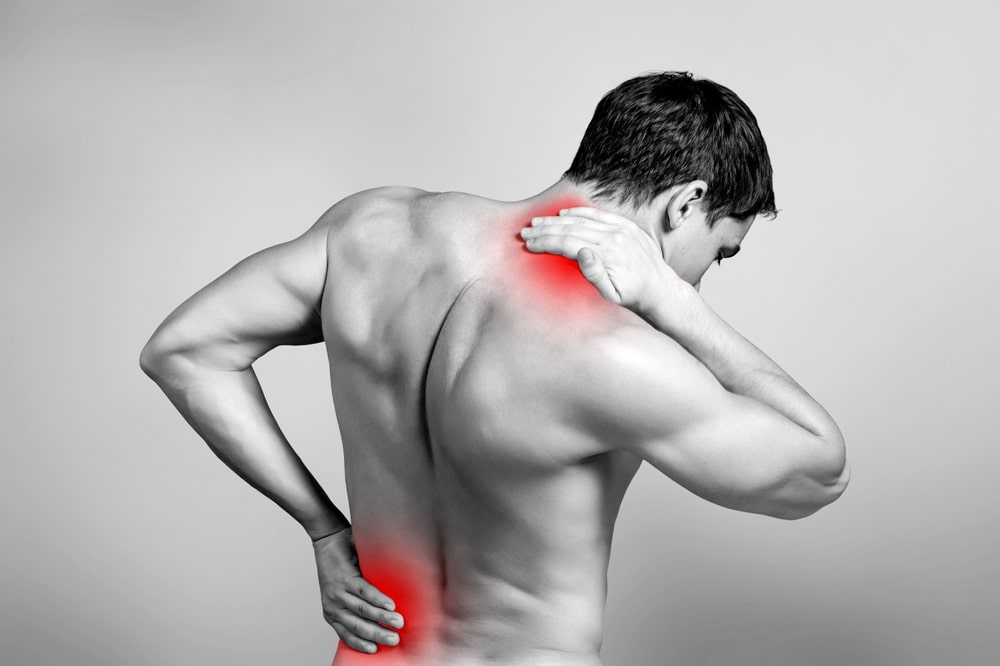An Achilles tendon rupture is a serious and often sudden injury involving the partial or complete tearing of the Achilles tendon, the strong fibrous cord that connects the calf muscles (gastrocnemius and soleus) to the heel bone (calcaneus).
This tendon is important for enabling everyday activities such as walking, running, jumping, and climbing stairs. A rupture can cause significant functional impairment, especially if not diagnosed and treated promptly. While some ruptures are the result of chronic tendon degeneration, many occur suddenly in otherwise healthy individuals, often during sports or high-impact activities.
Anatomy and Physiology of the Achilles Tendon
The Achilles tendon is the thickest and strongest tendon in the human body. It is formed by the merging of the gastrocnemius and soleus muscles (calf muscles).
The tendon inserts into the posterior surface of the calcaneus (back of the heel bone). Its primary function is to transmit the force generated by the calf muscles to the heel, allowing plantarflexion of the ankle – this is the movement needed to push the foot downwards, such as when standing on tiptoe or pushing off during walking and running.
A unique feature of the Achilles tendon is its relatively poor blood supply, particularly in the mid-portion of the tendon, approximately 2 to 6 cm above its insertion point. This area is the most common site for degenerative changes and subsequent rupture.
The tendon also withstands significant mechanical loads, often up to 10 times body weight during intense physical activity.
Causes of Achilles Tendon Rupture
Achilles tendon rupture typically results from a sudden and forceful stress placed on the tendon, which may be normal or already degenerated.
Common causes include:
- Sudden acceleration, sprinting, or jumping during sport.
- Rapid dorsiflexion of the ankle (upward foot movement) against resistance.
- Pre-existing tendinopathy or chronic degenerative changes in the tendon.
- Sudden increase in physical activity, especially in those not regularly active.
- Use of medications that weaken tendons, such as fluoroquinolone antibiotics or corticosteroids (oral or injected near the tendon).
- Inadequate warm-up or muscle fatigue, particularly during explosive movements.
The injury often occurs during activities that require rapid changes of direction or explosive power, such as football, basketball, tennis, or squash.
Risk Factors: Who Is Most Susceptible?
Certain demographics and lifestyle factors make individuals more prone to experiencing an Achilles tendon rupture:
- Age: Incidence peaks in individuals aged between 30 and 50 years.
- Sex: Men are significantly more likely to suffer from a rupture than women.
- Physical Activity Level: People who engage in high-impact sports intermittently (commonly referred to as “weekend warriors”) are at higher risk due to sudden, unaccustomed stress on the tendon.
- History of Tendon Problems: Previous Achilles tendinitis or tendinosis increases the risk of rupture.
- Medication Use: Certain medications, such as fluoroquinolone antibiotics and corticosteroids, are linked with increased tendon fragility.
- Foot Mechanics: Flat feet, overpronation, or tight calf muscles can lead to increased strain on the Achilles tendon.
- Obesity: Excess weight can increase mechanical stress on the tendon during physical activity.
Signs and Symptoms
The signs and symptoms of an Achilles tendon rupture are typically sudden and dramatic.
Most patients report:
- A distinct “pop” or snapping sensation at the back of the ankle, often compared to being kicked or struck.
- Sudden, sharp pain in the calf or heel, followed by a dull ache.
- Difficulty walking, particularly when pushing off the foot.
- Inability to rise on tiptoe on the affected leg.
- Swelling and bruising around the lower calf and ankle.
- A palpable gap or defect in the tendon, especially within the first 24 to 48 hours.
Symptoms may be less obvious in partial tears or in delayed presentations, and pain may subside quickly, which can lead some individuals to underestimate the severity of the injury.
Clinical Assessment and Diagnosis
History and Physical Examination
Assessment begins with a detailed history, focusing on the mechanism of injury, prior tendon symptoms, and risk factors. The physical examination will evaluate swelling, bruising, and the integrity of the tendon.
Special Tests
Several clinical tests are used to diagnose Achilles tendon rupture:
- Thompson Test (Calf Squeeze Test): The patient lies face down with feet hanging off the edge of the bed. The examiner squeezes the calf muscle; absence of foot movement indicates a likely rupture.
- Palpation: A gap in the tendon, typically 2-6 cm above the heel bone, may be felt if examined early.
Imaging
While many ruptures can be diagnosed clinically, imaging is often used to confirm the diagnosis, assess the extent of the tear, and plan treatment:
- Ultrasound: A dynamic and accessible tool for detecting partial or full-thickness tendon tears. It also assesses tendon retraction and associated swelling.
- MRI: Provides a highly detailed view of the soft tissues and can be particularly helpful in ambiguous cases or where surgical planning is required.
Treatment Options
The choice between conservative (non-surgical) and surgical treatment depends on multiple factors, including patient age, activity level, general health, timing of presentation, and personal preferences.
Conservative Management
Conservative treatment is increasingly used, particularly in older adults, those with medical comorbidities, or where the tendon ends remain closely apposed.
It typically involves:
- Immobilisation in a functional walking boot with the ankle initially positioned in plantarflexion.
- Gradual adjustment of the boot over 6-8 weeks to bring the foot into a neutral position.
- Supervised rehabilitation programme with a physiotherapist, focusing on range of motion, strengthening, and proprioception.
Advantages:
- Avoids risks of surgery such as wound infection or nerve injury.
- Minimally invasive and cost-effective.
Disadvantages:
- Slightly higher risk of re-rupture (though modern rehabilitation protocols reduce this).
- Potential for slower return to full function and strength.
Surgical Management
Surgical repair is often recommended for younger, active individuals or for complete ruptures with tendon retraction. Surgical options include:
- Open Repair: A traditional method involving a longer incision to allow full visualisation of the tendon ends.
- Minimally Invasive or Percutaneous Repair: Smaller incisions reduce infection risk and promote quicker healing but require experienced surgeons.
Benefits of surgery include:
- Lower risk of re-rupture compared to conservative treatment.
- Faster return to sport or high-demand activities in many cases.
Risks include:
- Wound infection.
- Sural nerve injury.
- Scar sensitivity or adhesions.
Prognosis and Recovery
Prognosis
With appropriate treatment and rehabilitation, most patients recover good function:
- Return to normal daily activities: Often within 3 to 6 months.
- Return to sport: Usually between 6 and 12 months depending on the level of activity and progress in rehabilitation.
- Re-rupture risk: Estimated at 2-5% in surgically treated patients and 4-10% in those managed conservatively.
Some patients may experience long-term calf weakness or reduced endurance, especially if rehabilitation is not closely followed.
Rehabilitation and Postoperative Guidelines
A structured rehabilitation programme is essential regardless of treatment approach:
- Phase 1 (0–2 weeks): Protection in plantarflexed position, limited weight-bearing.
- Phase 2 (2–6 weeks): Gradual transition to neutral position, begin gentle movement.
- Phase 3 (6–12 weeks): Full weight-bearing, begin active strengthening exercises.
- Phase 4 (3–6 months): Progressive strength training and functional activities.
- Phase 5 (6+ months): Sport-specific training and return to previous activity levels.
Early functional rehabilitation has been shown to improve outcomes and reduce complications such as stiffness and muscle atrophy.
When to Seek Specialist Help
If you experience sudden calf pain, swelling, or difficulty walking after a sporting activity or misstep, you should seek medical intervention immediately.
Early assessment and diagnosis by a musculoskeletal specialist ensures significantly better outcomes.
At London Bridge Orthopaedics, our consultants provide expert clinical evaluation, access to on-site imaging, and comprehensive treatment planning.
FAQs
How long does it take to recover from an Achilles tendon rupture?
Recovery can take between 6 to 12 months, depending on the treatment method and the individual’s response to rehabilitation. Most patients return to regular daily activities within 3 to 6 months and to sports within 9 to 12 months.
Is surgery always required for an Achilles tendon rupture?
No, not always. Many patients, particularly those who are older or less active, may be treated successfully with conservative (non-surgical) methods. The decision depends on the severity of the rupture, patient preferences, and lifestyle.
What are the signs that I might have ruptured my Achilles tendon?
Common signs include a sudden popping or snapping sensation in the heel, sharp pain, swelling, bruising, and difficulty walking or standing on tiptoe.
Can I prevent an Achilles tendon rupture?
While not all ruptures are preventable, maintaining strong and flexible calf muscles, warming up properly, avoiding overtraining, and wearing appropriate footwear can reduce the risk.
Will I be able to return to sport after an Achilles rupture?
Yes, many patients return to sport, especially with appropriate treatment and a structured rehabilitation programme. Return to high-impact or elite-level sport typically takes 9 to 12 months.
What happens if an Achilles rupture is left untreated?
If left untreated, the tendon may heal improperly, leading to chronic weakness, gait abnormalities, and difficulty with physical activity. Delayed treatment may also reduce the effectiveness of both surgical and non-surgical options.
Further information available: NHS Achilles Tendon Ruptures




